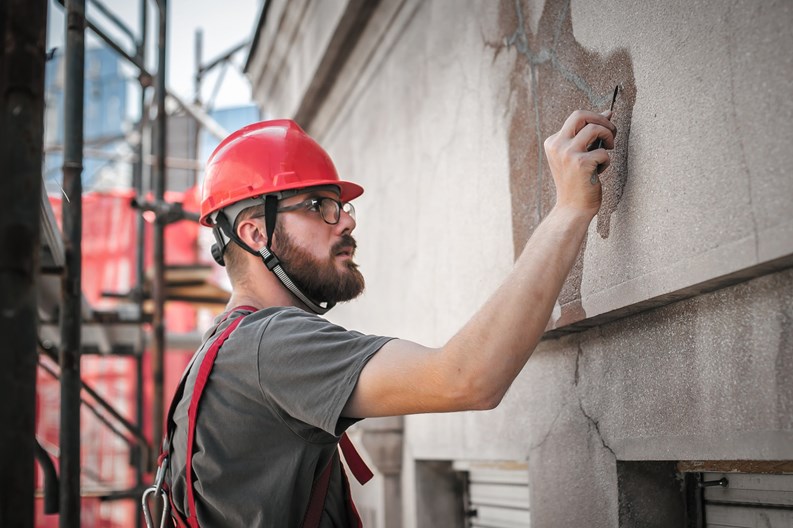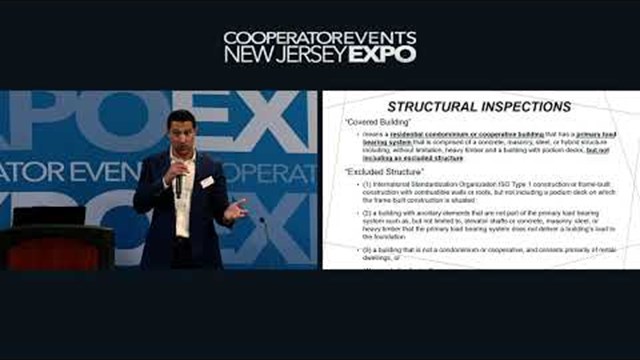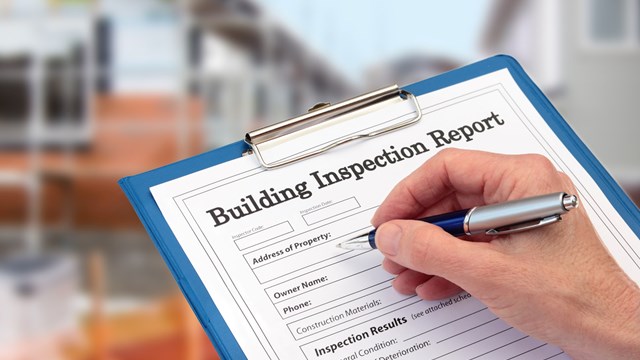Exterior maintenance and repair are some of the most extensive—and expensive—work that a condo, HOA, or co-op will undertake; they’re also unavoidable. So when planning such projects, two important factors should be considered: The first is the scope of the work, and the second is who should do it. These are really two sides of the same coin, since the scope of the work may actually determine who should do it. Safety is another key consideration. The inherent dangers involved with certain types of maintenance—roof work, for example, or anything else done on a scaffold—are an important factor. No association, board, or management organization wants to put someone’s life or safety at risk for the sake of window cleaning or repointing some brickwork, and no one wants to increase possible liability for the association—so let’s look at how these kinds of projects are best handled from the start to maximize efficiency while minimizing risk.
Qualifications Are Key
“I just had this conversation this week with the board members of a condominium property we manage,” says Scott Wolf, CEO of Brigs LLC, a property management firm based in Massachusetts. Maintenance employees in a given building or association have varying levels of experience and qualification, he stresses, and “if they are qualified to do the specific work, they should do it. If they aren’t, they shouldn’t. In this specific case, the association wanted someone to do a roof inspection. The person they chose was a maintenance guy—but he wasn’t qualified, so it wasn’t safe for him to be on the roof.”
Wolf explains that different job titles indicate respective levels of expertise with exterior and building systems maintenance. For example, generally speaking, a facilities manager is qualified to carry out an array of inspections, repairs, and other tasks that may require specialized education or training that a maintenance worker isn’t necessarily qualified to do, while “a building custodian or cleaner is just that: someone who keeps the property clean and orderly.” In other words, you don’t send the guy who cleans the lobby to inspect—much less repair—the roof. Doing so isn’t just dangerous for the worker; it can void warranties, cause problems to be missed (leading to more costly repairs), and even raise issues of liability.
Inspections and Reporting
As to who can or should do an inspection of exterior or interior building systems, that really depends on what they’re inspecting. If management schedules a walk-around inspection of exterior lighting every three months, the maintenance person or cleaning person who is in charge of changing light bulbs is certainly qualified to do that inspection. Similarly, observational inspections of parking lots and community drives and roads should be completed three to four times a year and reported back to the board through management. Again, this type of observational inspection can be completed by almost anyone who can recognize a pothole. Roof and façade inspections, on the other hand—especially when they involve pitched roofs or multistory buildings—are complex undertakings and should be carried out by outsourced professionals, preferably ones who are specialists in the field in question.
The next critical step for management is to report the results of physical inspections to the board for ultimate decision-making. Traditionally, inspectors took a clipboard, notepad, and pencil with them and delivered the findings of their inspections to management, who then delivered the results and appropriate comments and suggestions to the board. The advent and adoption of all types of electronic tools and methods has changed all that, however. Apps, tablets, and smartphones have replaced clipboards and handwritten notes. These apps can easily produce documents that can be delivered to board members by managers in a nanosecond electronically, saving time, reducing confusion, and lessening the environmental impact of endless paperwork.
The Fine Line for Residents
One recurring problem issue for boards, management, and residents of condominium associations is the fine line between what building staff can and should do for unit owners and what they should not do when it comes to maintenance and repairs.
Many unit owners come to the condominium experience directly from rental units—and consequently, they often continue to think like renters long after they become owners. In the rental universe, the landlord—and, by extension, the building staff—are expected to make repairs on almost anything, exterior or interior.
“Condominium owners need to understand that the workers and staff of their association are there for the common areas of the property, not individual units,” says Wolf. That’s very different from living in a rental, where the landlord is responsible for all repairs. “Staff may not be insured for work in or around individual units,” says Wolf. They cannot work on personal projects—only common area work. Some associations allow for private work after hours. We discourage it, but if staff members do this kind of private work, they must be licensed and insured.”
According to Ellen Shapiro, an attorney with Marcus, Errico, Emmer & Brooks, a law firm located in Braintree, Massachusetts, when it comes to individual condominium associations, “no one size fits all. Everything depends on the type of management the property has, and what management is required to do under their contract. Otherwise, governing documents dictate what a board or association is required to do” in terms of maintenance and upkeep.
Insurance Concerns
“I would suggest reviewing your association’s governing documents—the bylaws, CC&Rs, and so forth—before determining how best to accomplish a project,” says Wayne Dow, a partner in New Jersey-based JGS Insurance. “Oftentimes, such documents set out mandates as to how certain maintenance, repairs, or capital improvement projects are to be performed, and by whom. Running afoul of any mandates could expose the board of directors and other insured persons, such as the property manager, to claims of breach of fiduciary duty or other causes of action. You also want to ensure that the work to be performed is within the scope of ability and expertise of the person who’s been given the task.”
Worker safety and proper systems maintenance should of course be frontmost in a board’s collective mind as they handle the business of their building or HOA—but so should reducing potential liability to the association. Often it is not. “There’s always this desire for people to get things done cheaper—no matter the job,” says Ryan Fleming, also a partner in JGS Insurance. “Quite often, the true costs and risks inherent aren’t fully appreciated. When considering a project, the work that needs to be done is only the beginning. There’s also property exposed to damage, and people exposed to potential bodily injury. Insurance products provide coverage for these exposures for sure—but are those exposures worth the risk to a building’s insurance policy for the savings in project cost? Hiring someone internally to perform a job of any type will indeed expose the association to paying workers compensation benefits if there’s an injury. Hiring a third party and making sure they have their own workers compensation coverage provides a solid layer of protection. It also protects the budget from unforeseen additional premiums, or unexpected payroll. Specialists are specialists for a reason. When you hire one, you are hiring their many years of experience to ensure a job well done.”
In the final analysis, management and association boards must consider a multitude of factors when making decisions about the appropriate upkeep of their exterior building systems. Those systems are key to the continued optimal function of the association’s most important physical component: the property itself. The value of individual units will rise and fall based on the condition and function of these systems—everything from parking lots to roofs, façades to windows, doors to gutters. At the same time, community administrators must be ever-mindful of finding the right people to handle the many facets of maintaining the property, from inspections to repairs to major capital projects. Those chosen to do this work should be appropriately credentialed and qualified, both for the benefit of the association and for the sake of their own safety. Never be penny-wise and dollar foolish when dealing with both the physical health of your property and the physical safety of your staff.
A J Sidransky is a staff writer/reporter for CooperatorNews, and a published novelist.










Leave a Comment